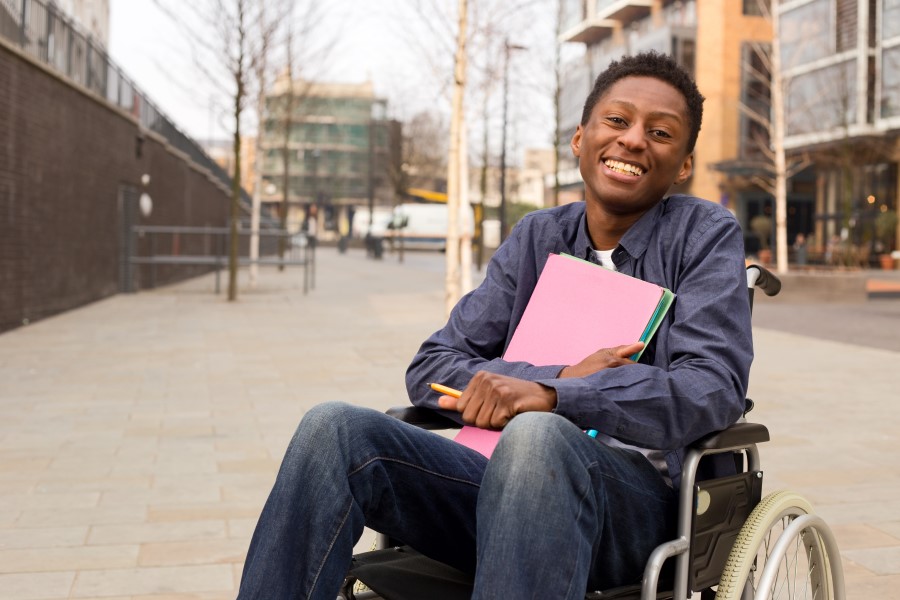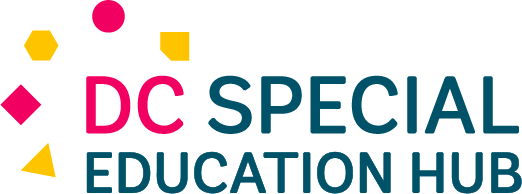 Transitions are a big part of life for all students, and students with disabilities are no exception. Students may experience both formal and informal transition supports as they age and grow through their time receiving special education services.
Transitions are a big part of life for all students, and students with disabilities are no exception. Students may experience both formal and informal transition supports as they age and grow through their time receiving special education services.
Choosing the Right School
Choosing a new school can be an exciting, fascinating, and sometimes overwhelming process. This can be even more true for families of students with disabilities, as they may have additional questions about programming, supports, school-wide systems, and more. Use our "Questions To Consider When Choosing a New School" tool to help you decide exactly what to ask when you chat with potential schools for your child!
DC students have a right to enroll in their in-boundary public school, or they can apply for a seat at an out-of-boundary public school or public charter school through the My School DC lottery process. Families can find more information on the lottery and students with disabilities on the My School DC website.
Formal Transition Planning
Each special education student has a Post-Secondary Transition Plan included in their IEP (Individualized Education Program) once they reach the age of fourteen (typically around eighth grade). This plan may include student input, MDT (Multidisciplinary Team) input, transition assessments (like a career interest inventory or independent living assessment) and other relevant information.
Transition plans vary widely based on the needs and interests of the student, but all include goals related to the student’s transition after high school graduation. This may include goals and supports around identifying colleges with appropriate supports, finding employment opportunities, independent living planning, and college or career counseling.
Transition plans are revisited at least once a year just like the rest of the IEP. This allows for team collaboration and adjustment of goals and services based on student growth or changes in interests or circumstances.
High School Diploma vs. Certificate of IEP Completion: Which is Best for My Child?
Students with IEPs may finish high school with a traditional diploma or an alternative certificate. The diploma track requires students to complete the same course credits and requirements (community service, attendance, etc.) as their non-disabled peers, although they will still receive IEP supports.
For students whose disabilities prevent them from completing the kinds of courses required by the diploma track, a Certificate of IEP Completion may be more appropriate. Families and students should be aware that a Certificate of IEP Completion is not equivalent to a diploma or GED, which are required for many jobs and postsecondary education opportunities.
Early consideration is best when it comes to transition planning. The multidisciplinary team should discuss which track is most appropriate for the student when the graduation process starts as students enter ninth grade. For more information, you can view the DC high school diploma requirements here.
How Do I Support My Child Through Other Transitions?
Of course, graduation is not the only transition students face during their academic careers. Moving to a new grade, classroom, or school can provide challenges and growth opportunities for all children. Children with disabilities may encounter additional challenges when it comes to these changes. The following strategies may help students adjust when faced with educational transitions.
Preview Changes
Students with disabilities may experience anxiety and uncertainty when it comes to starting in a new grade, school, or classroom. Previewing these changes can be as simple as meeting your child’s teacher before the year starts or touring the new classroom or school with your child before their first day. This allows your child to get a feel for the changes ahead of time. It also gives you and your child an opportunity to share with their new teacher or administration about your child’s strengths, areas for growth, and excitement or concerns coming into the new space.
Create a Schedule
While it may look different for children of different ages, creating a schedule can help your child visualize their day and adjust more easily to new routines. Visual schedules with a picture of each task may be appropriate for younger students and may include steps from “Brushing Teeth” to “Ride School Bus Home”.
Older students may need support creating a schedule that includes their class times and locations, as well as dedicated time for homework, studying, or relaxation time. Tech-savvy teens may even prefer to keep their schedule in their phone’s calendar app so they get automatic reminders of tasks and events.
Acknowledge Your Child’s Feelings (and Your Own!)
Transitions come with a plethora of feelings: anxiety, excitement, fear, loss, anticipation, and more. Keeping communication open is vital in creating a space where your child feels comfortable expressing and processing these feelings. Sharing some of your own anxiety or trepidation can also help your child recognize they are not alone.
Depending on their age, helping your child process feelings can take the form of conversations at the dinner table, playtime or outings to the park or other preferred activities, or story time (there are many great books about transitions!)
